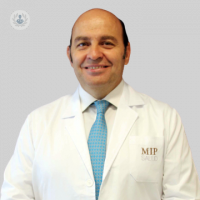Tips for Preventing Urinary Tract Infections (UTIs)
Written by:Urinary tract infection (UTI) is one of the most common human conditions. In the first three months of life it is more common in men due to structural alterations, such as the presence of posterior urethral valves. After a few years it is more common in girls due to a functional cause that is usually corrected with puberty.
If the infection is not controlled, the responsible bacteria can reach the renal pelvis and the developing kidneys by intraluminal, causing multiple episodes of pyelonephritis that causes renal scarring and, consequently, chronic renal failure.
Approximately from 15 to 50 years, UTI is practically non-existent in men, whereas in women it has a prevalence of up to 3% of the population.
Possible Causes of ITU
Sexual activity is an important risk factor in these cases.. In both sexes, anatomical changes (such as prostatic hypertrophy in men and physiological changes such as menopause in women) predispose to UTI. There have been few achievements in the prevention of UTI, and particularly in young women, despite the great medical advances of the last decades. In addition, the frequency of UTI increases during pregnancy and poses a risk to the mother and the fetus.
Preventing ITU
Possibly the introduction of hygienic-dietary measures is the fundamental basis of effective prevention. The main measures are: increase the intake of fluids with the aim of diluting and eliminating with frequent and frequent micturition bacteria that reach the bladder, anal cleansing postdefecation in women always in the anteroposterior direction, postcoital vaginal douche or even better, postcoital urination , Correction of constipation in children and adolescents and intake of blueberry juice.
Acidification of urine with hippuric acid or vitamin C seems to be another effective preventive measure that aims to achieve a low urinary pH that hinders the growth of bacteria in the bladder.

New preventive measures to control UTI
The fundamental objective for the control of ITU lies in the knowledge of the different alternatives, both therapeutic and diagnostic, as well as its prevention.
Microbiology and Virulence Factors for ITU
At present, the presence or absence of fimbriae or adhesins and the type to which they belong is considered the crucial initial factor in the development of UTI. Type 1 fimbriae are usually associated with infections of the lower urinary tract (cystitis) and type P fimbriae (pyelonephritis). Urinalysis with incomplete bladder emptying is the most important functional cause, together with decreased urinary flow and catheter manipulation. Also involved are prostatic hypertrophy, increased vaginal pH and anatomic and functional changes of the bladder. In any case, the first step for the infection to occur involves microbial attachment to the uroepithelial cells, which is carried out by the bacterial adhesion structures called fimbriae.
Autovaccines and suspensions of E. Coli for the ITU
The relationship between blood groups and UTI is another of the prevention factors. It has been found that, for example, individuals of blood group B and non-secretors have a greater predisposition to UTI.
The use of immune system activators in the form of inactivated or lysed cellular bacterial vaccines has been recently evaluated, incorporating different immunization pathways. The basis of this therapy involves the induction of antibodies during an active immunization that would lead to increased resistance to colonization in the genital and urinary tract areas and to activate immunocompetent cells that increase antibody production and prevent tissue invasion.
Bacterial adhesion inhibitors for UTI
Proanthocyanidins, more specifically those of type A, are the active principle responsible for the inhibitory activity of the adhesion of bacteria such as E. Coli to the urinary tract epithelial cells, and constitute the substance responsible for such activity present in cranberry. Other inhibitory compounds are catechins, a type of proanthocyanidins or condensed tannins found in plants. There are few natural sources in which proanthocyanidins type A (cranberry, peanut, avocado, plum, cinnamon and curri) have been identified, which act as inhibitors of bacterial adherence.
Bacterial biofilm inhibitors for the UTI
In fact, the formation of bacterial biofilms is one of the main causes of chronic infections and the failure of antibiotic treatment of the same ones. The biofilm prevents the access of antimicrobial agents, and even of antibodies, so that if it is not difficult to form or rupture once established, infection is perpetuated.
Several substances are known to inhibit its development, among which are type A proanthocyanidins, hesperidin, apigenin, naringin and rhoifoline, among others. More than 60% of chronic infections involve the production of biofilms. To give some examples, biofilms have been demonstrated in organic tissues and inert surfaces, under conditions as varied as endocarditis on native heart valves, osteomyelitis and numerous musculoskeletal infections, tonsillitis, otitis media, sinusitis, periodontitis, as well as in the Infection associated with all types of prostheses, cannulas and catheters.
Cyclic adenosine monophosphate stimulators for the ITU: forskolin
The effectiveness of forskolin in the treatment of UTI has been proven by increasing the cyclic adenosine monophosphate (AMP) content in urothelial cells, leading to uropathogenic bacteria to leave. Once in the epithelial cell, microorganisms are able to resist antibiotic treatments. Cyclic AMP levels regulate the exocytosis of these vesicles depending on bladder distension. Forskolin, which is the active component of the Coleus forskohlii plant, is capable of increasing such levels in epithelial cells. This would favor the exocytosis of uroplaquine vesicles and release uropathogenic bacteria from the intracellular reservoir into the lumen. These considerations could lead to open new avenues for the treatment of recurrent urinary tract infections.
In summary…
Although there is little scientific evidence on this, new avenues are being developed for the prevention of urinary tract infection. These include increased fluid intake and discharge, anal cleansing post-defecation in the anteroposterior direction, postcoital urination, correction of constipation, and prolonged antibacterial prophylaxis with well-tolerated and highly urinary elimination antibiotics or chemotherapy. On the other hand, new expectations are opened with the use of inhibitors of bacterial adhesion to urothelial cell receptors and inhibitors of biofilm formation. The development of new measures such as cyclic AMP stimulators inside the urothelial cells, or the development of vaccines integrated by complete bacteria, fimbriated bacteria and elaborated from infective microorganisms (autovaccines) or subcellular components (fimbriae or Adhesins) are an interesting initiative in this field.


